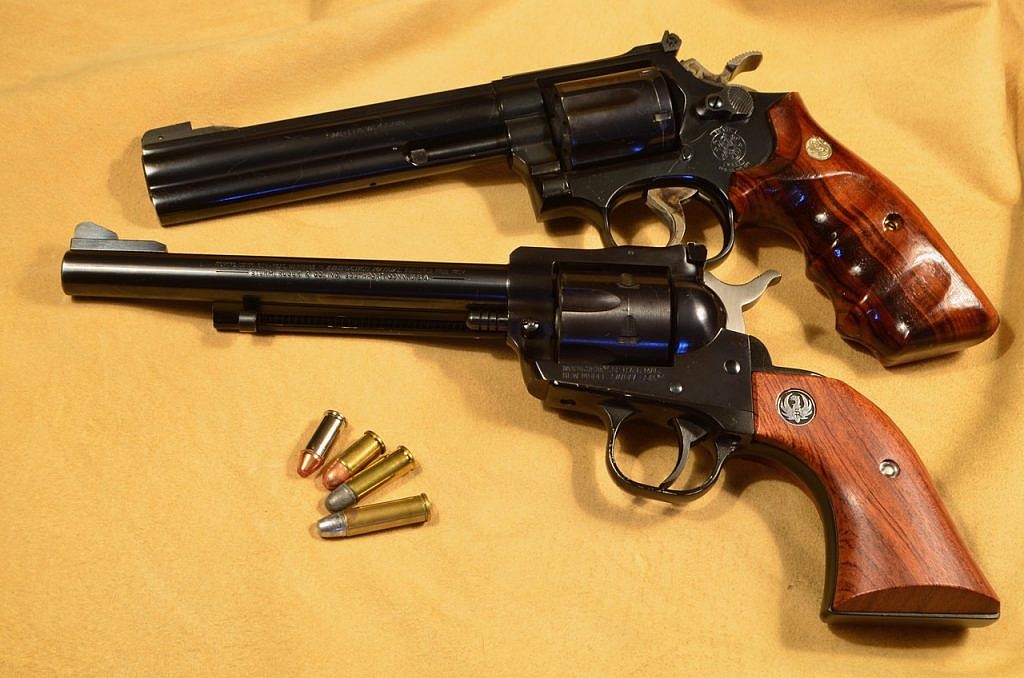
by Terry Wieland
A couple of weeks ago, I realized an ambition that has been lurking for 32 years, give or take a few lapses of memory. Roaming around Gun Broker, I came across a Ruger Single-Six, chambered in .32 H&R Magnum, a cartridge for which I’ve had an affection since I acquired a Smith & Wesson Model 16-4, way back in 1990.
As I got to know the .32 H&R, and its ancestor, the .32 S&W Long, and even farther back, the .32 S&W, I became very fond of shooting paper targets, steel plates, and even a couple of marauding raccoons — the last about exhausting the .32’s limits as a hunting cartridge.
The various .32s echo the situation with the .38 Special/.357 Magnum combination, or the .44 Special and .44 Magnum. The only difference among cartridges in these families is case length, so if you own a .32 H&R with its long chamber, it will accommodate the two shorter .32s as well, and even (sometimes) the .32 ACP. You have to be cautious with the latter, being semi-rimmed, because you may get misfires. But in a strong, modern revolver it can work pretty well.
This sounds like the perfect solution to the multi-purpose gun dilemma, except for one thing: A gun made for the .357 Magnum is going to be bigger and bulkier than one made just for the .38 Special. You’re always wielding a .357, whether you want to or not.
Exactly the same situation exists with the 12- and 20-gauge shotgun. It’s nigh impossible these days to get either one without 3-inch chambers. Unfortunately, a 3-inch magnum shotgun has to pass 3-inch magnum proof, which means it will be heavier, with thicker steel at the breech, and so on. This can add a pound or more, which is a liability if you are looking for a nice, light, well balanced 12 gauge to shoot nice, light, well balanced 12-gauge loads.
After the .32 H&R Magnum appeared in 1984, there was not exactly a rush to chamber it. Ruger eventually added it to its Blackhawk line, and in a burst of ingenuity that can only have been a committee decision, made a convertible model that was sold with two cylinders, one in .32 H&R, the other in the venerable and much loved (in some circles) .32-20. In effect, you were buying four — or even five — guns in one.
Alas, since they began with all the same Blackhawk components, the exterior dimensions were exactly the same but less steel was removed from the bore and the chambers, leaving the .32’s parts noticeably heavier. Who wants a .32 that is just as bulky as a .357, and actually heavier?
I acquired one of these a decade or so ago, which is how I know this. Fortunately, I quickly found someone who wanted it more than I did. Which is the point where I resumed my search for the smaller, lighter, more compact .32-caliber Single-Six.
The Single-Six was originally designed for the .22 Long Rifle, so making one in .32 pushes it about to itsw limit, but leaves a light, handy revolver. Ruger made it for about ten years (1984-94) but then brought it back for a few specialty runs later on. If you look at its production history, it will seem to have been made longer than it actually was.
This is a “New Model” Single-Six, with a transfer bar and its innards rearranged, and you can buy spring kits and so on to give it lovely, smooth hammer and trigger pulls, so if you have the impression it would be a poor cousin to the Blackhawk, that’s not the case.
In recent years, both the .32 and .38/.357 families have been further extended with even longer versions, the .327 Federal and .357 Maximum. To take the latter as an example, you can buy a .357 Maximum and then, should the mood strike, use .357 Magnum, .38 Special, or even some of the older scattered .38s, such as the .38 S&W. It leaves you in the position of using a double-axle John Deere to mow the lawn, but what the heck.
All of this would not matter except that, for those who do not want to detonate magnums at every turn, it gets harder and harder to find smaller, lighter guns made for the original cartridges.
For years, people with more influence than me tried to convince manufacturers there was a market for a snub-nosed carry gun in .44 Special which would be handier than the hulking .44 Magnum. A few efforts were made but I guess not many were sold, and those are now hard to find.
What this tells us is that, while writers and some serious gun guys might prefer something smaller, the great mass of the gun-buying public is still seduced by the word “magnum” and the concept of sturm und drang right there in your hot little hand.
After Gray’s Shooting Editor Terry Wieland finished writing his book on dangerous-game rifles about 15 years ago — a hard-kicking, noisy crowd — he went into therapy with some .22 target pistols and has never looked back.
